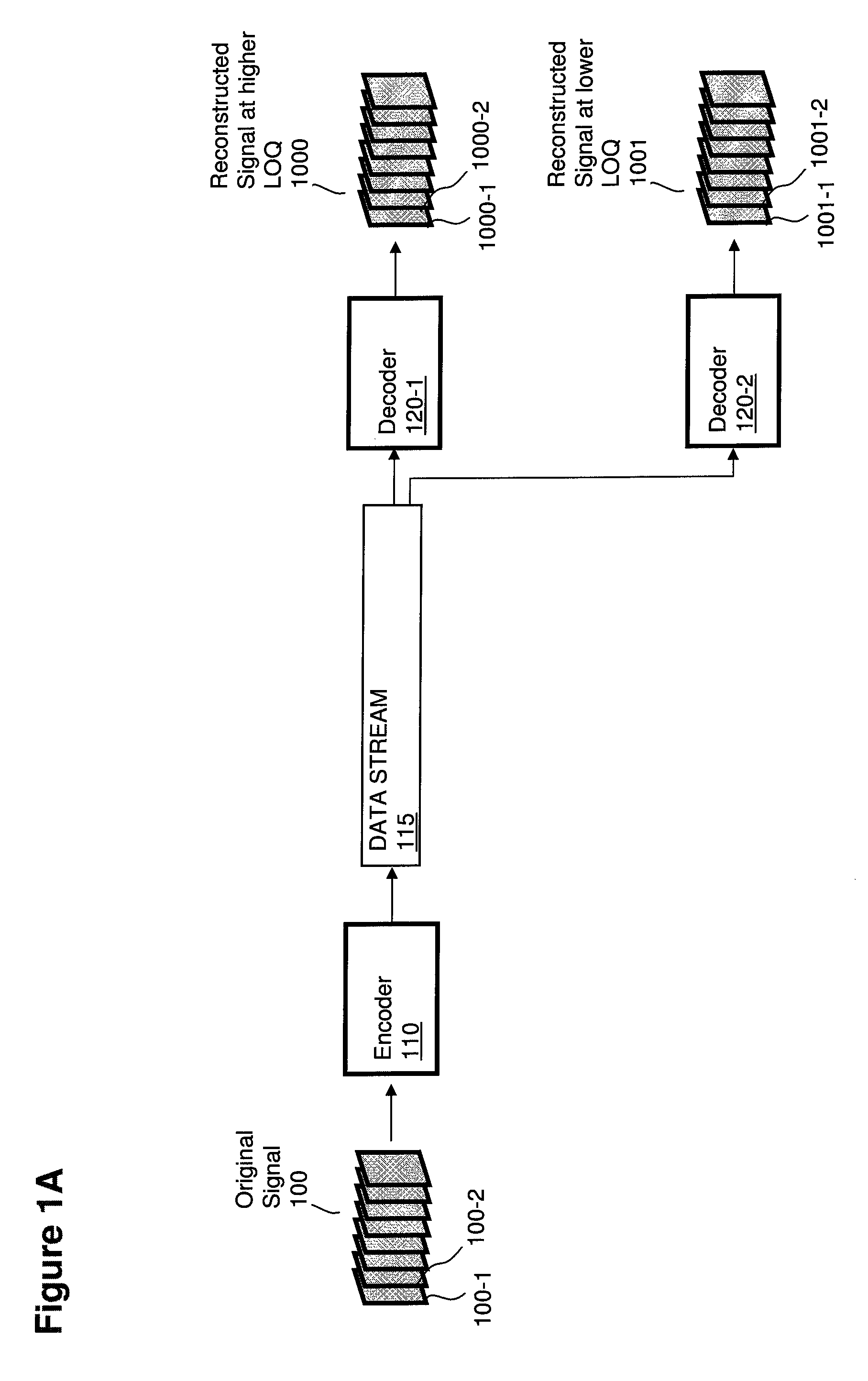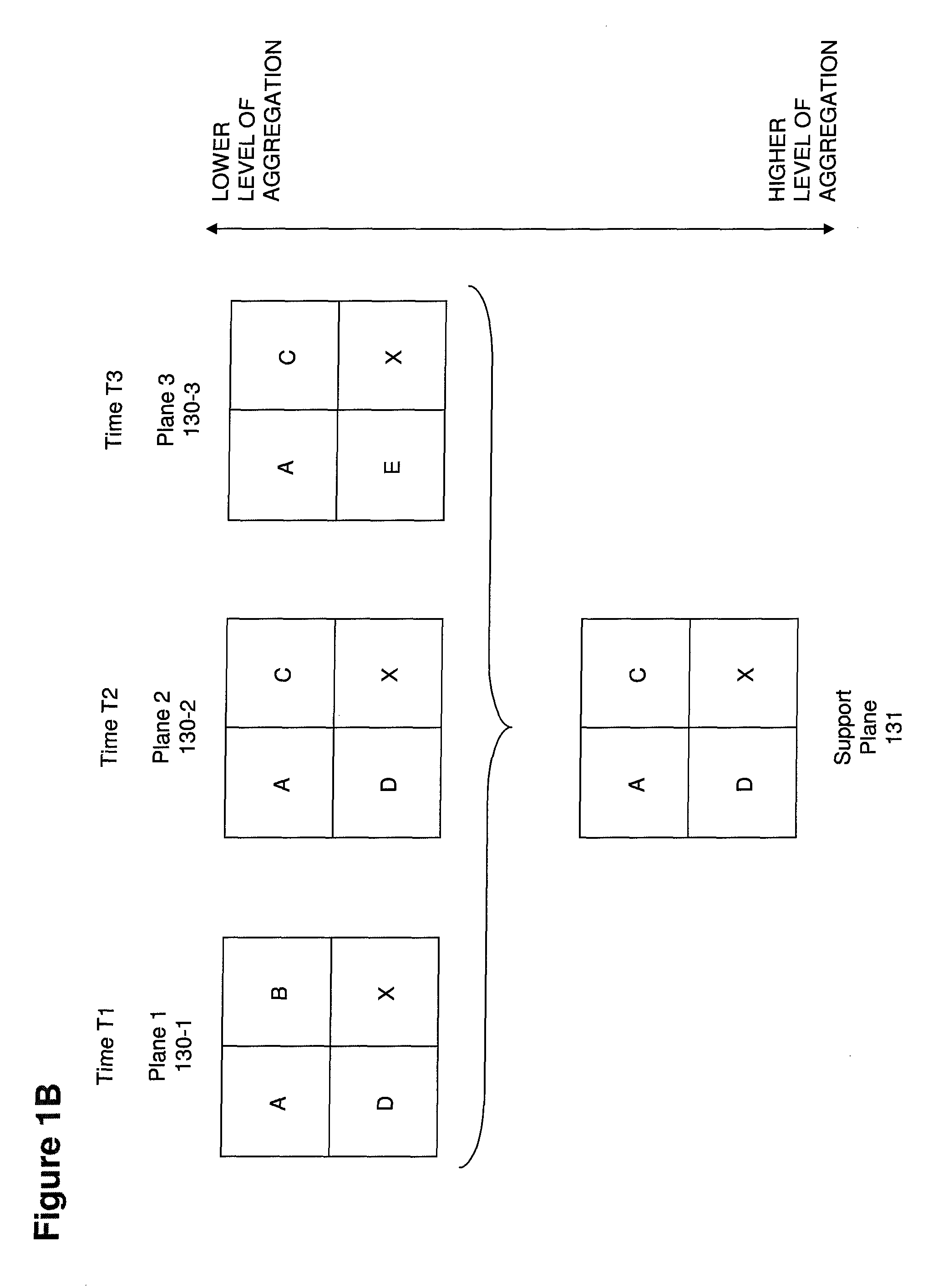Encoding and decoding based on blending of sequences of samples along time
a sequence and sequence technology, applied in image data processing, color television, television systems, etc., can solve the problems of prone to artifacts, affecting the quality of images blended, and accumulating errors in samples, so as to achieve the effect of maximizing the time correlation of images blended
- Summary
- Abstract
- Description
- Claims
- Application Information
AI Technical Summary
Benefits of technology
Problems solved by technology
Method used
Image
Examples
Embodiment Construction
[0074]Methods illustrated herein are suitable for any type of multi-dimensional signals, including without limitation sound signals, multichannel sound signals, pictures, two-dimensional images, video signals, multi-view video signals, 3D video signals, volumetric signals, volumetric video signals, medical imaging signals, signals with more than four dimensions, etc. For simplicity, along the description the illustrated embodiments usually adopt the use case of video sequences, i.e., a time-based signal consisting of a sequence of 2D images (commonly called “frames”, or “fields” in the case of interlaced video signals), with each element (in such non-limiting example case typically referred to as “pixel”) being characterized by a set of color settings in a suitable color space (e.g., YUV, RGB, HSV, etc.). Different color planes (e.g., the luminance-Y plane and the two chrominance -U and V-planes) are often encoded separately, and often with different resolutions (due to the lower se...
PUM
 Login to View More
Login to View More Abstract
Description
Claims
Application Information
 Login to View More
Login to View More - R&D
- Intellectual Property
- Life Sciences
- Materials
- Tech Scout
- Unparalleled Data Quality
- Higher Quality Content
- 60% Fewer Hallucinations
Browse by: Latest US Patents, China's latest patents, Technical Efficacy Thesaurus, Application Domain, Technology Topic, Popular Technical Reports.
© 2025 PatSnap. All rights reserved.Legal|Privacy policy|Modern Slavery Act Transparency Statement|Sitemap|About US| Contact US: help@patsnap.com



